
Car parts have gone through numerous levels of evolution ever since the first vehicle was invented. From improvements in the fuel pressure regulator to the introduction of the high-flow fuel pump, a host of upgrades have been made to overall vehicle performance.
Even though countless minor improvements are made to vehicles regularly, some inventions have been known to be complete game changers, with the emergence of power steering systems being at the forefront of innovation in the automobile industry during its time.
This revolutionary system comprises different parts, but the main component which does the main work is the power steering pump.
Let us discuss this in greater detail as we delve deeper into the definition of power steering, understand its functionality, and talk about how you can change your power steering pump.
The Power Steering Pump: Explained
Many people think that it might have been a manufacturing company like Honda that introduced power steering into their vehicles, but it was the Chrysler Corporation that changed the game with their 1951 Chrysler Imperial.
What makes the power steering such an innovation in driving convenience and comfort is that it essentially provides drivers with turning assistance, requiring much less effort to move the steering wheel, largely due to the power steering pump.
Like fuel strainers or the external fuel pump, the power steering pump is an essential component that makes up a larger system, which is the power steering in this case.
The main function of this pump which is installed within the power steering, is to ensure that sufficient pressure is applied to the wheels for the car to make a smooth turn.
The power steering pump is the backbone of the entire system because of its efficient pressure management when turning the car which ensures that the car turns smoothly, with the driver needing to put comparatively less effort when turning the steering to make the turn.
The pump's functionality may sound simple, but its operation is essential for the steering to perform and ensure a comfortable driving experience for the driver.
How Does It Work?
Even though its inner workings might seem straightforward, ensuring efficient pressure management with each turn is an incredibly complex operation requiring many components to work behind the scenes.
When the steering moves to make a turn, the power steering pump triggers the system so that additional force is applied to the side where the vehicle needs to be turned.
The pressure the power steering manages originates from a different component known as the rotary vane pump located within the engine.
Power steering fluid resides within the pump, which is transported from the lower pressure sectors to the steering rack at incredibly high pressure by the rotary vane, enabling driver assistance and less effort to make the turn.
After the turn has been made, the pump contains a relief valve which ensures that too much pressure is not exerted on the steering to ensure successful operation of the power steering.
Besides the OSIAS E85 fuel pump, these vehicles require top-notch power steering systems to efficiently make turns in rough terrain while traveling at incredibly high speeds.
Bad Power Steering Pump Symptoms
The power steering pump is vital to your steering system and the suspension.
This is why identifying symptoms related to a failing pump during its initial stages will save you from costly repairs that might occur if the problem is not identified until it reaches the late stages.
Stiffness in the Steering Wheel
If you feel like your steering wheel has become much sturdier when turning, and it is taking more effort to make a turn than normal, there is a possibility that the steering rack and other components are not receiving sufficient power steering fluid.
When facing such a situation, you should get your pump checked, as it might be possible for a faulty power steering pump to cause this.
You Hear Squealing When Putting Your Car in Ignition
Although a worn-out accessory belt can cause this, your power steering pump is likely at fault if you hear strange squeaky noises while starting your car.
Delay in steering wheel response
Often, a problem in the steering wheel can cause problems in the response issues within the steering wheel. This can lead to some incredibly fatal accidents, which is why getting your car checked out is strongly recommended if you are suffering from this problem.
How To Install a Power Steering Pump
Even though the exact process for installing a power steering pump might differ according to the vehicle, here is a step-by-step process of the general steps involved in this process.
1. Disconnect the car battery to avoid getting electrocuted.
2. Remove the engine cover
3. Locate the power steering pump on your vehicle
4. Take the power steering belt out
5. After placing a pan under the pump, drain the power steering fluid by detaching the lines.
6. Remove the bolts located on the bracket responsible for mounting the pump.
7. Once the bolts have been unscrewed, place the power steering pump.
8. Screw the bolts back in after setting the pump in place with the mounting bracket.
9. Reconnect the lines.
10. Attach the steering belt, ensuring it is set in its designated location.
11. Refill the new pump with power steering fluid.
12. Link the pump with the engine and let the car run to break in the pump.
13. Steer the vehicle in all directions while the car is in a stationary position to ensure that the pump is working fine.
Conclusion
The power steering pump is a vital part of the steering system, which is why it ensures that it functions smoothly, and performing maintenance is necessary to prevent any long-term problems.



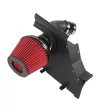
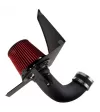
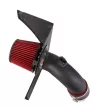
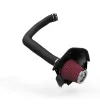
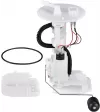


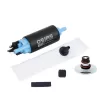

Write a comment